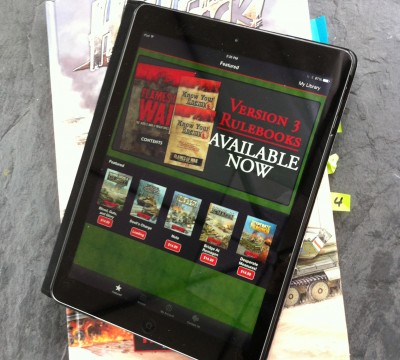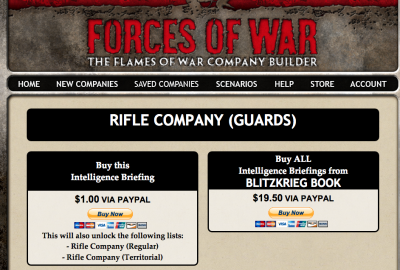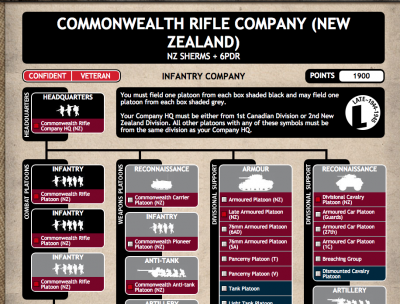Back in the 1980s, Bill Murray, Dan Aykroyd, and Harold Ramis put together a great object lesson in their movie Ghostbusters: Don’t cross the streams. “That would be bad…” added Ramis’ character, Dr. Egon Spengler.
Eventually, they figured out they needed to cross the streams to save humanity and New York City from an evil Gozerian domination plot.
Those of us in the media world, fortunately, don’t have to worry about ancient deities returning to our planet (not that I know of, anyway), but we can learn from Egon and the Ghostbusters. When we consider publishing streams for our long form works we need to look at crossing the streams of publication, and not just isolating each stream unto itself.
…a simple, strong truth has emerged: The future of books is built upon networked platforms, not islands… Craig Mod – “Platforming Books”
In today’s publishing world, a media producer has many avenues to pursue in getting their message out to the public.
Mod uses his “Art Space Tokyo” fine art book as an example of how crossing platforms with the same product can lead to different routes for and effects of the same underlying media product. In my previous essay, on Sh*t We Don’t Know We Don’t Know, I discussed how Mod crowd-funded the publication of the 2nd edition of his physical book. But, he also built on the physical artifact of the book and produced several different versions of the publication – crossing the streams each time.
In addition to the printed book – what he calls the “artifact” — Mod placed the entire book online — for free, as well as selling e-book versions through Amazon, Barnes and Noble, and an epub/pdf/mobi bundle. He stated in his “Platforming Books” essay that he strongly believes that books need a “public endpoints” due to today’s online culture of sharing. But, a question arises. How does an author make income or profit, if they give away their work for free?
Mod suggests that the profit is derived from premium products. He calls the printed edition of the book the keystone of those premium products. If you buy, he says, a physical copy of the book, he’ll send you the mobile bundle of the e-books at no extra charge. He also notes that users purchasing an e-book edition through Amazon gain access to the shared notes and highlights that are currently unique to Amazon’s Kindle publications.
As Mod states in a previous essay, Post-Artifact Books and Publishing:
The future book — the digital book — is no longer an immutable brick. It’s ethereal and networked, emerging publicly in fits and starts. An artifact ‘complete’ for only the briefest of moments. Shifting deliberately. Layered with our shared marginalia. And demanding engagement with the promise of community implicit in its form.
The book (or any publication) is a system. The previous print-only artifact or book was system rooted in isolation. The reader and the book: engaged, reading, viewing in a singular experience. Marginalia, from coffee stains to highlighting and notes scrawled in the white space around the text were there for a single, isolated user. Pass the book on to another reader, and they could reload the experience, lament the coffee stains and read the notes – again, in isolation.
But, in today’s world of Kindle books with their shared popular highlights, we’re no longer in isolation. This is a feature I just discovered for myself. I’m currently reading The Bohemians: Mark Twain and the San Francisco Writers Who Reinvented American Literature. I noticed that several passages were already underlined with dashed lines, such as:
“They shared a single purpose: to wage all-out war on mediocrity, materialism, and the middlebrow.” (pg 65)
A light tap on the underlined passage, showed it to be a “popular highlight” where 13 different folks (as of now) had highlighted that particular passage. Since I’m a chronic highlighter, when I read non-fiction, I like this little feature. I now find myself paying attention to what other folks have found appealing. Sometimes I highlight the same passage. Most often, I find myself highlighting something different. Other passages speak more to me, often because they build on a concept or thought I noticed from the popular highlights.
Case Study
One area where I see an industry beginning to play with the post artifact model of publishing is in the historical miniatures gaming market.
Battlefront Miniatures produces several games, and one of their most popular is Flames of War. This particular game system has been adapted to fit a variety of time periods, from the First War (The Great War) to Vietnam, as well as Israel in the 1960s. Their most popular time period, by far, is World War II. This is a game system I play and collect “artifacts” from.
For historical game publishers, there are two types of artifacts they can sell: rule sets (aka Books) and models (the tanks, vehicles, and troops in miniature). For the purpose of this essay, let’s stick with the table-top version of gaming, and not try to compare online gameplay with personal, face to face friendly games.
Battlefront has done something different in the games publishing world. Just like Mantic, I described the Kickstarter campaigns in my previous essay here, Battlefront is stepping outside of the “artifact” box. They are still in the early stages of this, and might be hampered by the limits of the technology they’ve selected to work with, but, they are showing vision for the future as the gaming industry learns how to embrace the digital age.
Then entire publication “streams” for Battlefront – whether the stream is print or e-book/web platform based – must succeed in one goal: selling artifacts such as models of soldiers, tanks or vehicles (the primary artifact of the company), or enhance sales of digital products and premium e-products to players. This means they need to have a game system that is popular, easy to access and has both long-term as well as new players.
Under the artifact publishing model, the main WWII Flames of War rulebook was available as an artifact only – either in hardcover form or as a small paperback (identical to the hardcover – just smaller type) packaged as part of a starter set with enough models to begin playing the game.
 Battlefront broke the established artifact model when they moved their rule set over to a digital app for the iPad. Their app was recently updated to version 1.1, which shows that they are listening to user feedback and building on what they’ve already established. Mod points out in his “Platforming” essay:
Battlefront broke the established artifact model when they moved their rule set over to a digital app for the iPad. Their app was recently updated to version 1.1, which shows that they are listening to user feedback and building on what they’ve already established. Mod points out in his “Platforming” essay:
…Even ‘simple’ apps are hard. Really hard. And whether simple or complex, almost no one was doing it right.
Their use of the app on only one platform (iPad) is expected to grow. They have stated that they’ll be developing an app for Google-based tablets “soon.” I can see, however, that allowing the developers to develop the interface and system by working solely on the iPad platform first, serves as a live, for profit, beta test of usability and features. Lessons learned in that platform can then cross over to other platforms.
In this app, the rule books – both the main game rules, as well as add-on books detailing specific forces for specific time periods — may be purchased as a form of e-book that is only viewable with the app. The main rulebook is available for under $10 – a substantial saving over the $40+ price tag when it was originally published.
Currently, Battlefront has an MSRP of $30 for its hardcover resource books – such as “Grey Wolf,” a breakdown, and point cost of the German forces in the late war period on the Eastern Front. Red Bear is the Soviet forces breakdown of the same time period. Each book is available on the digital app for $23.99.
In addition to details about the battles, distribution of forces, types of weapons, and other historical information, the resource books detail how to put together a “legal” list of forces for gameplay. To keep games balanced, each player agrees to a point limit up to which they assemble their force. The books list out the points for each unit, what weapons they have, and which types of units, tanks, etc can be combined in that particular force. Add a sheet of paper, and a pencil, and the gamer is good to go on making a force to take to their next game.
Of course, the players will need models … “little toy soldiers” and tanks… lots of tanks. Which Battlefront will gladly sell to the players.
Ways in which this dual streams model of publishing (hardcover as well as in-app e-books) is breaking the artifact publishing model, and moving to more of a crossing the streams model are numerous, but the most important innovation is how the app is combined with another online “app” via the web: Forces of War.
At the Forces website, users may purchase access to army lists and build their forces, or “orders of battle” where each unit is “purchased.” This is a convenience app. It builds on the resource books that are available in artifact or e-book form. A player needs one or the other to build a “legal” list for gameplay.
 In the Flames of War digital app, a player need not purchase an entire book, but can instead purchase single army lists, or groups (e.g. all of the British lists in the Blitzkrieg book). Each single army list for a force cost $1 to unlock, or, players can receive a discount for purchasing access to all lists from a single book.
In the Flames of War digital app, a player need not purchase an entire book, but can instead purchase single army lists, or groups (e.g. all of the British lists in the Blitzkrieg book). Each single army list for a force cost $1 to unlock, or, players can receive a discount for purchasing access to all lists from a single book.
In the Forces of War online site, players can purchase access to these same lists – and a few more that are released only in the Forces of War site. Unfortunately, these two apps don’t currently connect. Battlefront is requiring an either-or purchase model. Players CAN purchase both forms – the e-book from the iPad digital app, or Forces of War army builder lists on the web
 In the first stream, with the iPad app, they are purchasing the reference materials in e-book form and using paper and pencil to make their own playlists. With the Forces site, users are purchasing access to the Forces online site and using it to build, then print out their lists. They don’t get the full content of the e-book, but they do get to use the site to create and store their army lists for ongoing use.
In the first stream, with the iPad app, they are purchasing the reference materials in e-book form and using paper and pencil to make their own playlists. With the Forces site, users are purchasing access to the Forces online site and using it to build, then print out their lists. They don’t get the full content of the e-book, but they do get to use the site to create and store their army lists for ongoing use.
As Mod pointed out in his cross-platform essay, the money to be made by crossing the streams is in the premium products. The Forces app is a premium product for Battlefront. I’ve found it to be a time-saving resource, but I am selective of which lists I purchase access to via the site.
Unfortunately, the Forces site may be competing with, instead of enhancing their e-books digital app. The digital app offers e-books at about a 20 percent discount over their physical artifact cousins. But, there isn’t much enhancement to these products. The indexing and chapter linking are still clunky, especially in the main rulebook. There is no enhanced content.
The main rulebook could be enhanced with hotlinks to other sections of the book for topics. Anytime an entry in the index has multiple page numbers, this could be hot linked with a “See also” box to take readers to the next page listed for that index entry. Battlefront has a fairly large You-Tube channel, with many introductory videos explaining the basics of the game. These could be hot-linked as well to the various books, as appropriate.
Other potential apps that could be developed include a training aid, designed to walk new players through the turn sequence, step by step. Indicating movement rates for various vehicles, the number of dice to roll, when to roll, and what value on the die roll indicates success.
 Tournaments are popular with the Flames of War players. A tournament app could also be developed. One that allowed players to log in, then tourney organizers could release match-ups and table numbers to players through the app. At the end of each game round, players could enter their score, confirm their opponent’s score, and have these resulted transmitted to the tournament officials. The app could then catalog the players, and create new matchups based on tourney specific rules such as “Swiss matchups” where the players accumulating the most wins play against each other in the next round.
Tournaments are popular with the Flames of War players. A tournament app could also be developed. One that allowed players to log in, then tourney organizers could release match-ups and table numbers to players through the app. At the end of each game round, players could enter their score, confirm their opponent’s score, and have these resulted transmitted to the tournament officials. The app could then catalog the players, and create new matchups based on tourney specific rules such as “Swiss matchups” where the players accumulating the most wins play against each other in the next round.
Another additional thought on missed opportunities: in the e-books, Battlefront is missing an opportunity by not hotlinking each troop type, tank and vehicle to the appropriate page in their online store. Their main business interest, after all, is to sell miniature tanks and troops.
Finally, the disconnect between the e-book purchases and the Forces of War army builder site is most glaring enhancement missing.
Under their current model, players have no real reason to cross the streams from purchasing an e-book in the app AND purchasing the force list on the Forces app. This may be a technology issue – with no real way to track purchases through the app, and connect the same account to the Forces app on a different platform (web vs. iPad). I find myself not purchasing the e-book form of reference books to build army lists with, but, instead, purchasing the lists through the Forces app.
Crossing those two streams could increase sales of the e-book resource books. By offering a discount for lists in Forces, players might become more interested in purchasing the e-book form. Purchased together, the two streams could still generate more revenue for the company than a single stream purchase. But, by discounting both purchases together; players might be more inclined to purchase two streams, instead of only one.
